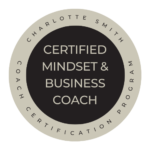


Agribusiness Leadership provides the necessary tools to unveil the fundamental principles of
Empowered Leaders that Trust themselves and the relationships they lead and leaders who are curious to discover who they are and who they lead.

Years ago, if you walked into my house around 6 p.m., you could feel the tension. I was quick to anger. My family wasn’t sure which version of me was walking through the door, and honestly—neither was I.
When I first heard the idea that your thoughts create your emotions, which drive your actions and results, I was skeptical. It felt too neat for the mess of real life. But I tested it. In small, ordinary moments.
One night, I caught myself snapping at my family after a frustrating day. The fact was simple: dinner was late and a work issue was unresolved. My first thought was, “No one respects my time.” That thought produced anger. That anger produced blame. The result? Distance—the opposite of what I actually wanted.
The next time, I chose a different thought: “We’re all tired. I can bring steadiness here.” That thought produced calm. Calm gave me options. I asked two questions, finished the issue in ten minutes, and we ate together. Same circumstance; different thought. Different result.
That was the turning point: I don’t control everything, but I do control the next thought I choose. My actions—and my results—follow. That realization changed my leadership and my home.
This is why I teach the Thought Model. Not as theory, but as a practical way to lead without fear or control.
Most problems leaders face aren’t purely operational. They’re mindset problems that show up as operational issues. The Thought Model makes that visible:
Circumstances → Thoughts → Feelings → Actions → Results
The model isn’t about positive thinking. It’s about taking responsibility for the one lever you fully control—your thinking—so your actions produce the results you actually want.
Before we get tactical, here’s how I weave my own story into the model. The shift didn’t happen because I tried to be more positive. It happened because I learned to choose thoughts that honored three anchors:
Your thoughts are the hinge that swings the whole door. The FACTOR framework is how you choose thoughts that build the outcomes you need:
When leaders combine trust, intentionality, and purpose at the Thought step, their actions and results shift fast.
Scenario 1: Missed deadline
Scenario 2: Underperforming hire
This is the same practice I used to move from reactivity to steadiness:
Use this five-minute tool after any frustrating moment:
Repeat this for a week. Patterns show up quickly.
Copy this grid into your notes for your next 1:1 or post-mortem:
Use the same structure with your team so they learn to think, decide, and act without you carrying every decision.
When teams are ten people or fewer, your thinking scales faster than any SOP. Your thought becomes the cultural cue. Choose trust. Be intentional. Stay tied to purpose. Results follow.
I used to be the angry guy. Learning this model didn’t make life perfect; it made me responsible. That responsibility built trust at home and at work—and it’s why I coach leaders through the same shift.
Next step: If you struggle with anger issues leading your team or if you know you want to get better at communicating with yourself and those around you I would love to hear your story. Feel free to email me.
Gap and the Gain – Benjemin Hardy and Dan Sulivan
Why Strong Leaders take 5 Minutes to get clear